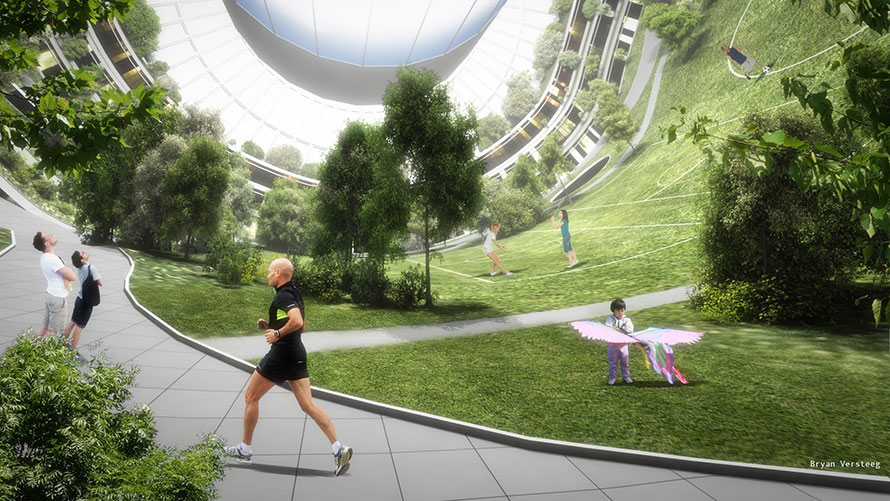A small (about 100 m diameter), rotating habitat for permanent residents, providing about 1g in Equatorial Low Earth Orbit (ELEO) below about 500 km.
 ELEO space settlement Kalpana 2. Image: Bryan Versteeg, spacehabs.com
ELEO space settlement Kalpana 2. Image: Bryan Versteeg, spacehabs.com
BACKGROUND
A rotating settlement (for example, with a diameter of about 100 meters and a mass of about 8500 tons and housing about 500 people) could evolve from larger space stations or space hotels. If located in Equatorial Low Earth Orbit (ELEO), such settlements would not need radiation shielding because they would be protected from radiation by the Earth itself and the Earth’s magnetic field and would also avoid the higher radiation environment of the South Atlantic Anomaly that affects non-equatorial orbits. With radiation shielding not being needed, the mass of such settlements can be drastically reduced compared with orbital settlements located elsewhere in space. Combined with proximity to Earth this lowers cost and simplifies both logistics and integration with Earth’s economy. Therefore it seems feasible for all the building and resupply materials to be launched from Earth with a reasonable number of launches using projected future launchers. Precautions to avoid uncontrolled de-orbiting would be needed.
COMPONENTS
- Habitat intended for long-term residency.
- Transportation system to equatorial LEO.
BARRIERS
- Construction technology.
- Life support technology.
- Economic return.
- LEO debris.
COMPLETION
This milestone can be considered completed when an ELEO settlement is in regular operation.
MORE OF THE NSS ROADMAP TO SPACE SETTLEMENT:







